The Tolkienic Song of Ice and Fire: Sailing To The Uttermost West
by Bluetiger
***
Introduction
In the final episode of Game of Thrones Arya Stark makes the choice of leaving Westeros and sailing west, into uncharted waters of the Sunset Sea and whatever seas and oceans might lay further. Many fans made a connection between this conclusion to Arya’s story and the ending of J.R.R. Tolkien’s The Lord of the Rings, where several characters, such as Frodo, Bilbo, Elrond, Galadriel and Gandalf also sail west from the Grey Havens.
Considering there were so many visual and storywise references and similarities to LOTR, I believe it is quite likely that the GOT screenwriters included this parallel intentionally. From a certain point of view, I think Arya’s ending in the ASOIAF novels could be generally the same. Perhaps different events will lead to it, but I can see Arya doing such a thing. After all she always admired Nymeria, the warrior queen of the Rhoynar who led the famous fleet of ten thousand ships, to the point where she named her direwolf pup after her. Actually, it is in Arya’s chapter where the reader first hears about Queen Nymeria and what she did, early in A Game of Thrones.
Maybe the story of Elissa Farman from Fire & Blood is also supposed to foreshadow Arya’s fate. After all, both characters have a connection to Braavos – Arya travels there and becomes a Faceless Man in the making, Elissa flees there after stealing three dragon eggs from Dragonstone. In fact, both heroines have abandoned their name and surname in this Free City and assumed a new identity – Arya became the Cat of the Canals, No One, the Blind Girl and Mercedene “Mercy”, Elissa Farman became Alys Westhill. It’s also quite curious that of all the names, GRRM made the choice to make Elissa’s alias “Alys” – after all, in ASOIAF, that’s the name of Arya’s lookalike Alys Karstark, who might be the grey girl on a dying horse Melisandre saw in a vision.
The name Elissa also holds special significance and deep symbolic meaning, I believe – several months ago, I wrote an essay about parallels between ASOIAF and Vergil’s The Aeneid: Aenar’s Aeneid a Tolkienic Song of Ice and Fire essay by Bluetiger; The Advent Calendar 2018, Week Four. It turns out that the mythological Elissa was a Queen of Tyre who was forced to flee from her city when her younger brother made an attempt to usurp the throne, and she led her faithful followers on a fleet of ships across the Mediterranean Sea, until they reached the coast of Northern Africa, where they founded the city of Carthage. There is more to this story, and if you’re interested in such topics, please check out my original essay.
House Stark also has a connection with sailing west into the unknown beyond the Sunset Sea – after all, it was King Brandon the Shipwright who made the first recorded attempt to explore lands to the west of Westeros. He never returned and his son and heir Brandon the Burner famously put the entire northern fleet to torch out of grief. It is worth mentioning that in the real-world folklore, Saint Brendan the Navigator, a 6th century monk from Ireland, supposedly sailed across the Atlantic – and thus west from his homeland – and reached places like Iceland, Greenland, Northern America and various legendary islands inhabited by strange creatures and tribes.
The motif of the hero sailing away from the known world at the end of his arc features prominently in Arthurian legends – the final resting place of King Arthur himself is the Isle of Avalon, where the mortally wounded monarch is taken by ship.
Thanks to Tolkien, who gave his heroes Frodo and Bilbo “an Arthurian ending” sailing towards the Uttermost West will forever hold an important meaning in fantasy literature. In this essay, I’ll explain what it means in LOTR and more generally in Tolkien’s Legendarium. I’ll explore what the White Ship actually saved towards, why that place was so special, what was the ultimate fate of those who traveled there, and also list all major characters who made this voyage over thousands of years.
***
The Uttermost West: Valinor
The Uttermost West was another name of the continent of Aman, also known as the Undying Lands and the Blessed Realm, where the realm of Valinor was located. Calling Valinor “LOTR Heaven” would not be correct and actually quite misleading, but this land was the closest thing Arda – the planet where LOTR takes place – had to Heaven (understood as a place similar to Heaven of the Christian faith). Another analogue we could use would be to call it Earthly Paradise (the Divine Comedy one), though this comparison is also imperfect.
Eons before the events of the War of the Ring, Arda and the entire Universe was created by Eru Iluvatar, the God. The Ainur (Holy Ones) are basically Angels, “offspring of Iluvatar’s thought” and first sentient beings created by him. During the Music of the Ainur, choirs of the Holy Ones made a song that created a vision of Arda. This Vision of the World showed the Ainur how its history will unfold, its very nature and ultimate fate. They gained great wisdom and knowledge, but they were not fully omniscient, for that is the attribute of Iluvatar alone. After the Music faded, Iluvatar pronounced the word Eä, which means Be! (as in Let it Be!). This turned the Vision into something real, and the Created World manifested itself within the Void.
According to Ainulindalë, which is the first part of The Silmarillion and recounts the creation of the world by Iluvatar, the Universe which came to be referred also by the word Eä, is a vast place of “wheeling fires” – stars, systems and galaxies surrounded by the Void. Within this Created World, Arda is the only place where the Children of Iluvatar – the races of Elves and Men – lived.
In those primeval times, some of the Ainur decided to enter the physical world instead of staying with Iluvatar in the Timeless Halls beyond the Deeps of Time. They would become bound to it until its final end, and serve as its guardians and shapers. The greatest of those Ainur were the Valar, the Powers of Arda. Those mighty angelic beings were later mistaken for gods by many peoples. There are fourteen Valar, seven Lords and seven Queens. However, there once were fifteen. The greatest of the Valar and all the Ainur was Melkor, but he fell and became Morgoth, the first Dark Lord. It was Morgoth who is the main antagonist of The Silmarillion. Sauron, the second Dark Lord after Morgoth’s defeat, was his chief lieutenant and most powerful servant in the First Age.
Sauron was initially one of the lesser Ainur, not counted among the Valar, who also entered the Created World and were supposed to provide help to the Powers of Arda. Those Ainur were known as the Maiar (Beautiful Ones). The most prominent Maiar are: Eönwë (banner-bearer and herald of Manwë, Melkor’s brother and King of the Valar), Ilmarë (handmaiden of Varda, Manwë’s wife and Queen of the Valar), Melian (mother of Luthien from the Lay of Beren and Luthien), Arien and Tilion (guardians of the Sun and the Moon, respectively), the fallen Maiar who served Morgoth such as the Balrogs, Mairon (who fell and became Sauron) and the Five Istari (Wizards) – Curumo (Saruman the White), Aiwendil (Radagast the Brown), Olorin (Gandalf the Grey) and the Blue Wizards Alatar and Pallando.
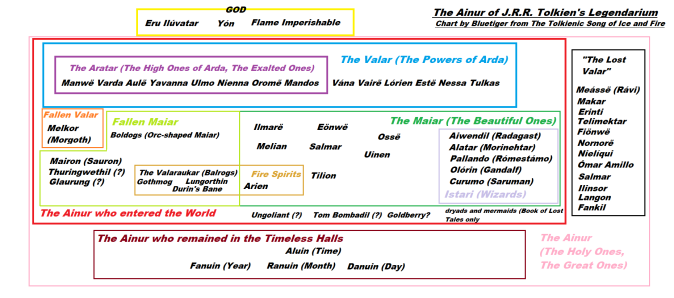
The Ainur and their Sub-groups, chart by Bluetiger
In the earlies millenia of Arda’s existence, Melkor made an attempt to claim it for his own, but the other Valar defied him during the First War. It was a cataclysmic era, for as the Valar tried to shape the world, the Dark Lord would constantly undo their progress – the lowered the mountain ranges they raised, he erected new mountains and hills in places where they intended valleys, he spilled the water from their seas and poured it in places where they wanted to have dry land. The initial design for Arda was forever lost and the perfect world the Valar tried to create would never come to be. In the end, Melkor was defeated and escaped beyond the Walls of Night, and Arda could finally enjoy some peace and tranquility.
In this time, the Valar made their dwellings at the very midpoint of the perfectly symmetrical world they made. This mindpoint was the beautiful and hallowed Isle of Almaren in the middle of the Great Lake in the center of Middle-earth, the central continent of Arda. To illuminate the world, the Valar built the Two Lamps, Illuin and Ormal, one in the northern part of Middle-earth and one in the south.

Arda during the Years of the Lamps, chart by Bluetiger
The Spring of Arda came to an end when Melkor suddenly returned, taking the unsuspecting Valar by surprise. The Dark Lord’s hosts of fallen Maiar attacked both Lamps and brought them down. Their downfall was catastrophic, the lands were shaken and the primeval symmetry was gone. The layout and shape of all continents and seas was shaped. The Isle of Almaren was completely destroyed and the Valar withdrew to the western reaches of Arda – to the Uttermost West that would be associated with them henceforth. The Valar came to the continent of Aman, where they founded the realm of Valinor. It was separated from Middle-earth and other lands by the vast Sundering Seas of Belegaer (though in the far north, there was a land bridge made of ice, in the frozen wastes of Helcaraxë). The Valar also raised the mountain wall of Pelóri, Mountains of Defence, on the eastern shore, to shield their new lands from the Dark Lord’s incursions.

Arda during the Years of the Trees, chart by Bluetiger
Valinor was a hallowed land where the Deathless dwelt, and this made the entire realm free from sickness, withering, corruption or any stain. The Blessed Realm was the most beautiful place on Arda, almost incomparable to Middle-earth.
The most notable landmarks were: the Pastures of Yavanna (the Valië called the Giver of Fruit and Queen of Earth), the sprawling fields of golden wheat; Woods of Oromë the Huntsman, rich in all kinds of wildlife; the Halls of Nienna (the Lady of Pity and Mourning, whose student Gandalf once was) with windows looking outward the Walls of the World; the Halls of Mandos, where the Vala of the same name lived and where the souls of the dead were summoned (Elves to be re-embodied after some time, humans to prepare for their final journey out of the world, to face Iluvatar). The Halls of Mandos were ornamented with tapestries woven by Mandos’ wife Vairë, whose works chronicled the entire history of Arda.
In Valinor there were also the Gardens of Lorien, the fairest of all places, inhabited by Irmo, the Vala of dreams and visions, and his wife Estë, the healer of hurts and weariness. There were also the Mansions of Aulë, Smith of the Valar, filled with forges, furnaces and smithies. The place where the Lords and Queen of the Valar gathered when a council was convened was called Máhanaxar, Ring of Doom. Meanwhile, Varda (who had many names and epithets in Elven poetry, such as: Elentári Queen of Stars, Tintallë the Kindler, Elbereth the Star-queen and Gilthoniel the Star-kindler) and Manwë (Súlimo the Breather, Lord of Breath of Arda, High King of Arda, Elder King, Vice-regent of Eru Iluvatar) lived in the palace Ilmarin, atop the highest peak in all of Arda, Taniquetil, also named: the White Mountain, Amon Uilos, Oiolossë the Everwhite and Elerrína Crowned with Stars.
Only Ulmo – Lord of Waters, King of the Sea and Dweller in the Deep – chose to have to permanent abode and instead live in the oceans, the seas and the rivers of Arda. As The Silmarillion explains: “Ulmo speaks to those who dwell in Middle-earth with voices that are heard only as the music of water. For all seas, lakes, rivers, fountains and springs are in his government; so that the Elves say that the spirit of Ulmo runs in all the veins of the world”. This might be why creatures of evil such as the Nazgul are afraid of crossing water.
The remaining Valar are: Tulkas the Valiant, the mightiest warrior of Arda; his wife Nessa the Dancer; and Yavanna’s younger sister Vána.
The major city of Valinor was Valmar, the City of Many Bells. The greatest wonder of the Blessed Realm, the Two Trees of Valinor – silver Telperion and golden Laurelin – grew on the green mound of Ezellohar or Corollairë near its gates. Later, when the Elves settled in Valinor, their own cities were built: Tirion upon the Hill of Túna, capital of the Noldor; Feanor’s stronghold of Formenos in the north; and Alqualondë, the Swanhaven, on the eastern shore.
All in all, Valinor was the most beautiful, the most peaceful and the most hallowed place on Arda. Over the ages, numerous characters and sometimes entire peoples would journey towards it. Their motives, however, varied greatly. Some were invited by the Valar, some sought the Powers of Arda to plead for forgiveness or ask for help. Others had darker purposes in mind. In the following section I’ll explore the most important of them.
***
The Vanyar, the Noldor and the Teleri
The first beings invited to Valinor were the Elves. The Firstborn Children of Iluvatar first awoke in the eastern region of Middle-earth, on the shores of Lake Cuiviénen (which means Waters of Awakening), which was in reality a bay of the inland Sea of Helcar. Morgoth – I’ll use the Dark Lord’s later name to describe him, though in the era I’m about to discuss this would be an anachronism, as it was given to him as an insult by Feanor much later – learned about this sooner than the Valar and dispatched evil beasts and shadows to harass the Elves, and even capture some. According to some legends, orcs descends from those first Elves corrupted by the Dark Lord. Some time later, one of the Valar – Oromë the Huntsman, who would often hunt in the vast woods covering Middle-earth in this age – came across the Elves and shared the news with the others. Oromë also gave a name to this first race of the Children of Iluvatar – he called them the Eldar, People of the Stars, because when he found them, they were contemplating the night-sky and admiring the stars of Varda. The Elves initially called their own kind the Quendi, Those Who Speak With Voices, as they knew no other species which possessed this ability.
When the Valar learned that Morgoth was attacking the Elves, they gathered their host of faithful Maiar and besieged the Dark Lord’s fortress of Utumno in the northern region of Middle-earth (previously, this continent was all but abandoned by the Valar, who moved to Valinor and had no business in this part of the world). Little about this War for the Sake of Elves survived in Elven chronicles or legends, but they remember seeing bright flashing lights in the north and the glow of great fires. Morgoth was captured and taken to Valinor, where he was imprisoned, but the Valar believed Middle-earth to be still too dangerous to be the place where the Elven-kind would flourish. Thus, they invited them all to Valinor. The Elves were uncertain if they should accept, and three envoys were sent to Valinor to survey that realm. Their names were: Ingwë, Finwë and Elwë. All would become kings. The messengers witnessed the glory of the Undying Lands and returned to their fellow Elves, urging them to begin the Great Journey to Valinor.
Not all agreed to this, however, and the Elves became sundered for the first time. The one group were the Avari (Refusers), who wanted to stay in Middle-earth and never set off on the Great Journey. Their leaders were named Morwë and Nurwë.
The Elves who began the long westward voyage were the Eldar (this name originally referred to all Elves). They were divided into three tribes or kindreds.
The Vanyar (Light-elves, Fair-elves) had pale skin and golden hair, in battle their weapon of choice was spear and their king was Ingwë, who was also granted the title of the High King of the Elves. The Vanyar were the least numerous tribe and they arrived in Valinor first.
The Noldor (Deep-elves) had dark hair – though some of the sons of Feanor famously had copper hair of their mother Nerdanel, and Feanor’s mother Miriel had silver hair. Their skills in craftsmanship and smithing were unequalled, their weapon of choice was sword and their king was Finwë.
The Teleri (Lindar, the Singers) were the largest group, so they had two leaders, brothers Elwë (one of the three envoys) and Olwë. Their hair was either dark or silver, and they fought with bows. In contrast to the Vanyar and the Noldor, not all of the Teleri who set off on the Great Journey arrived in Valinor.
The first group to split were the Nandor (Those Who Go Back). They were disheartened upon seeking the towering peaks of the Misty Mountains and settled in the Vales of Anduin. The Silvan Elves of the Third Age, people of Mirkwood and Lorien, were their descendants. When the remaining Teleri crossed the Misty Mountains, then the Blue Mountains and entered the region of Middle-earth by the Bay of Balar, Beleriand – where the events of The Silmarillion unfold and which at the time of LOTR has been submerged under the sea for millennia – they discovered that the Vanyar and the Noldor arrived so long in advance that the Valar decided to bring them to Valinor first and then return for the Teleri.

Arda in the First Age
For the purpose of transporting the Elves across the sea, the Vala Ulmo used a sizeable island originally located in the middle of the Great Sea, halfway from Middle-earth to the Blessed Realm and thus far away from any other land. That is why it was called Tol Eressëa, the Lonely Island. Ulmo used this isle as a ferry, pushing it back and forth between Aman and Beleriand. Awaiting this ferry, the Elves set up camps in Beleriand, with the Vanyar and the Noldor arriving first and the Teleri lingering behind.
It was in the woodlands of Beleriand that the Telerin king and one of co-leaders, Elwë, would meet Melian the Maia while wandering alone in the forest of Nan Elmoth. They fell in love and stood there entranced for many years, looking into one another’s eyes as if under some spell or enchantment. The Teleri searched for their lost lord, but when this seemed to be in vain, Ulmo refused to wait for longer and ferried the Vanyar and the Noldor to Valinor. Elwë’s brother Olwë continued the search, but when Ulmo returned with Tol Eressëa many years later, he agreed to abandon the futile quest and bring his people to Valinor.
However, some refused to forsake their king and thus the Teleri were once again divided, into those who sailed west and those who stayed in Beleriand. Another group which made camp on the shores of the Great Sea became enamoured with it and befriended the Maia of the Inner Seas and one of Ulmo’s subjects, Ossë. When those Elves were supposed to sail west, Ossë persuaded them to stay and they became the Falathrim, Elves of the Coastland of Falas in Middle-earth. Their lord was Nowë, who became known as Círdan, the Shipwright. He would play a crucial role in providing vessels for future voyages to Valinor.
When Elwë re-appeared before his people many years later, they welcomed him as their king and his wife Melian and their queen. Elwë and Melian founded the Kingdom of Doriath in Beleriand, and soon Elwë became the High King of the Sindar – the Grey Elves, as his followers came to be known. Meanwhile, the Teleri who sailed to Valinor lived for some time on the Isle of Tol Eressëa, now placed by Ulmo close to the shores of the Undying Lands, in the Bay of Eldamar. Some time later the Teleri of Aman, now referred to as the Falmari, Folk of the Waves, moved to Valinor proper and built their port city of Alqualondë, the Swanhaven.

Thus, the first to sail westward from Middle-earth, to Valinor, were the three kindreds of the Eldar – the Vanyar, the Noldor and the Teleri (though not all). They were invited there by the Valar, who believed Middle-earth to be too perilous for this newly awakened race of the Children of Iluvatar. The Undying Lands were supposed to be the place where their kind would flourish in peace, and for some time, they did just that. But it would not last.
***
Flight of the Noldor
To explore the later attempts of crossing the Great Sea – Belgaer – and reaching Valinor I have to briefly summarise some of the incredibly complex events of The Silmarillion. Obviously, much and more will go unmentioned.
The Teleri finally settled in Aman in the Valian Year 4661. Unfortunately, at different stages of his work on the Legendarium, J.R.R. Tolkien used different figures for how many solar years are there in one Valian Year. In the early texts, one Valian Year amounted to around 10 solar years, which was changed to around 9,58 solar year. Later, he wanted to rewrite the entire First Age chronology, using the 1 Valian Year = 144 solar years figure.
We know that the First War with Morgoth ended in V.Y. 1500, that the Two Trees of Valinor were created in V.Y. 3500 and that the first Elves awoke in V.Y. 4550. The Great Journey of the Eldar commenced in 4605, the Vanyar and the Noldor were ferried to Valinor in 4632 and the Teleri were taken there in 4651. The Valar started working on the Sun and the Moon in V.Y. 4997, and the Moon first rose in 5000, and this event marked the end of the Years of the Trees and the beginning of the Years of the Sun.
Then there were 590 solar years of the First Age, 3441 solar years of the Second Age, 3021 solar years of the Third Age and at least 220 solar years of the Fourth Age. Thus, Tolkien’s works are set over a period of at least 7272 solar years and 5000 Valian Years (as long as 47 910 solar years using the 9,582 years figure, 720 000 years using the 144 solar years number).
The Eldar lived in Valinor in peace for centuries (363 Valian Years, so either around 3478 solar years or over 52 272 solar years). In this time their kind flourished, and many great feats of science, linguistics, craft and art were accomplished. For example, a Noldorin Loremaster named Rúmil from the city of Trion invented the first Elvish alphabet, the Sarati. This sage also penned invaluable historical documents, such as the in-universe Ainulindalë (the first part of The Silmarillion), the geographical work known as Ambarkanta: The Shape of the World, various linguistic texts on the Elvish languages and the Annals of Aman, a chronological list of all major events from the creation of the world. Later, Fëanor created his own writing system which gained great popularity and was used in all four ages, the Tengwar. However, his most notable creation were the three jewels containing the light of the Two Trees of Valinor, known as the Silmarils.
This peaceful era would come to an end in 4995, when Morgoth found a way to treacherously assault Valinor, destroy the Two Trees and steal the Silmarils. King of the Noldor, Finwë, was also killed by him. When his son Feanor found out about this, he was overcome with rage and, gathering his seven sons in the city of Tirion, made the solemn and dreadful Oath of Fëanor – that they would not rest until the Silmarils are recovered, and woe to any of the Valar, the Maiar, the Eldar, Men or Morgoth’s creatures who would try to stand in their way.
Feanor also gave a fiery speech, rebelling against the Valar who forbade the Noldor to leave the Blessed Realm and chace after the Dark Lord. He blamed the Valar alongside Morgoth for what had happened, and asked why the Noldor should serve those who were unable to defend even their own land. Feanor urged his followers to return to the vast lands of Middle-earth – which were, according to him, denied to them by the Valar, who would rather keep the Elves in their golden cage. The Noldor, the most valiant of all peoples of Arda, should instead come back to the continent of their awakening and carve out kingdoms for themselves. Upon hearing those words, similar desires awoke in the hearts of many, and one of those was Galadriel, the daughter of Feanor’s half-brother Finarfin.
Feanor’s host then marched towards the coastal city of the Teleri, Alqualondë. There they demanded to be given the famed swan-ships, as they had no fleet of their own and a great number of vessels was necessary to transport the Noldor to Middle-earth. The Teleri refused to do so, as that was against the will of the Valar. Furious upon this denial, the Noldor sacked Alqualondë, massacred its people and took their ships by force. In consequence, the Valar cursed the Noldor and banned them from ever returning to the Undying Lands. Mandos, the Doomsman of the Valar, made the following prophecy:
“Tears unnumbered ye shall shed; and the Valar will fence Valinor against you, and shut you out, so that not even the echo of your lamentation shall pass over the mountains. On the House of Fëanor the wrath of the Valar lieth from the West unto the uttermost East, and upon all that will follow them it shall be laid also. Their Oath shall drive them, and yet betray them, and ever snatch away the very treasures that they have sworn to pursue. To evil end shall all things turn that they begin well; and by treason of kin unto kin, and the fear of treason, shall this come to pass. The Dispossessed shall they be for ever”. (from The Silmarillion by J.R.R. Tolkien)
When Feanor’s followers landed in Beleriand, the westernmost region of Middle-earth, he had all the stolen Teleri swan-ships put to torch (in ASOIAF, both Nymeria’s and Brandon the Burner’s ship-burnings might be references to this event). For over 500 years, the Noldor and their allies (human tribes known as the Edain, and the Grey Elves) battled Morgoth in Beleriand.
In the end, all those efforts were in vain. Feanor was slain in the early battle of Dagor-nuin-Giliath (Battle-under-Stars). The Noldor defeated Morgoth’s forces in the third great battle of Beleriand, Dagor Aglareb (the Glorious Battle), which led to the Siege of Angband, the Dark Lord’s stronghold in the north. The siege was broken after about 400 years and two catastrophic battles followed – Dagor Bragollach (Battle of Sudden Flame), during which Morgoth dueled and killed Fingolfin, the High King of the Noldor; and Nirnaeth Arnoediad (Battle of Unnumbered Tears), in which fell Fingolfin’s son Fingon, the second High King of the Noldor in Middle-earth. Kingdoms of Beleriand – Nargothrond, Doriath, Gondolin and others – fell one by one.
***
Voronwë and Turgon’s Emissaries
At one point, when the situation of the Noldor was plainly dire, King Turgon of Gondolin commissioned Cirdan the Shipwright to construct a number of ships, which were then used to sail westward and attempt to reach Aman, where the emissaries would plead with the Valar for forgiveness and help. All those ships were lost at sea, however, as Valinor was now defended by mists, shadow covering the sea and a treacherous archipelago of uncharted the Enchanted Isles. Only one of Turgon’s mariners would wash on shore of Beleriand many years later.
His name was Voronwë, and he was saved by the grace of Ulmo, who gave him the mission to guide a human warrior named Tuor to the Hidden City of Gondolin, where he was supposed to warn King Turgon against the danger that would soon come to his realm (foreshadowing Morgoth’s invasion and sack of the city). Turgon would not listen to this prophecy and instead of abandoning his marvellous Gondolin, chose to make it even more isolated and heavily guarded.
***
Tuor and Idril
Tuor remained in Gondolin, where he fell in love and later married Turgon’s daughter Idril Celebrindal. Their son Eärendil was the second child born from an union of the Eldar and the Edain. The family managed to escape from the Sack of Gondolin in First Age year 510. Tuor and Idril fled to the coastal Havens of Sirion, which at that time were the only place in Beleriand not overrun by Morgoth’s legions.
In 525 Tuor felt strange sea-longing and having constructed a ship named Eärrámë (Sea-wing) sailed west with Idril. No news concerning their fate ever reached Middle-earth, but according to legend told among the Elves and Men, by the grace of Ulmo or perhaps Iluvatar himself, Tuor and Idril were allowed to bypass all the dangers of the Great Sea and arrive in Valinor, where Tuor was granted immortality as the only human ever, and would be henceforth counted among the Eldar. How much of that story is true, no one can tell.
***
Elwing and Eärendil
Beleriand, as I have already mention, was almost fully conquered by Morgoth. Some Elves managed to flee to the Isle of Balar in the of the same name (according to some traditions, this isle was in fact a chunk of Tol Eressëa which was once anchored in this place when Ulmo used it as a ferry for the Eldar. Among them were Círdan the Shipwright and young Ereinion Gil-galad, the new High King of the Noldor following King Turgon’s death during the Fall of Gondolin.
Another group of refugees settled in the coastal land of Arvernien, in the Havens of Sirion. Their leaders were Tuor and Idril’s son Eärendil and his wife Elwing, daughter of the Half-elven Dior, son of the famous Beren and Luthien. With the aid of Círdan, Eärendil built a magnificent ship called Vingilótë, the Foam-flower, the fairest vessel to ever sail the seas.
The surviving Sons of Feanor wished to fulfill their Oath and claim one of the Silmarils, which has been recovered from Morgoth’s crown by Beren and Luthien and passed to their grand-daughter Elwing. For this reason they sacked the Havens of Sirion, slew its inhabitants and tried to seize Elwing, but she instead jumped into the sea. She was saved by Ulmo and transformed into a giant white bird, and in this guise she reached her husband’s ship far in the ocean.
Earendil and Elwing thought their twin sons Elrond and Elros were slain, while in reality they were saved by Maedhros, one of Feanor’s sons, who took pity on the children and raised them as his own sons. Thus, believing they have nothing to lose, they chose to break the ban of the Valar and sail west to Valinor, and there beg the Valar to forgive the Elves and provide aid to the Eldar and the Edain of Beleriand, now doomed to be subjugated by Morgoth. Thanks to the power of the Silmaril, Vingilótë was able to avoid all the obstacles and reach the shores of the Undying Lands. The Valar have foreseen this and dispatched their herald Eönwë to greet Earendil:
‘Hail Eärendil, of mariners most renowned, the looked for that cometh at unawares, the longed for that cometh beyond hope! Hail Eärendil, bearer of light before the Sun and Moon! Splendour of the Children of Earth, star in the darkness, jewel in the sunset, radiant in the morning!’. (from The Silmarillion by J.R.R. Tolkien)
The Valar decided Earendil and Elwing should not be punished for coming to Valinor, as they came not for their own sake, but for the sake of all Men and Elves. They were allowed to settle in the Blessed Realm, and Earendil became the steersman of Vingilótë, now hallowed and transformed into a star known to us as Venus. To read more about Venus-related symbolism in Tolkien’s works please check out my essay Eärendil, Bearer of Light – a Tolkienic Song of Ice and Fire essay by Bluetiger; The Advent Calendar 2018, Week Two. The Valar also sent a great host of the Vanyar and the Maiar to Beleriand, on a fleet built by the Teleri of Alqualondë. During this War of Wrath Morgoth was defeated, though Beleriand was shattered and sunk beneath the sea as a result of the struggles between so powerful beings. The first Dark Lord was defeated and cast beyond the Walls of Night, but at a great cost. Also, his second-in-command Sauron was able to escape to the east with many of Morgoth’s former followers.
***
The Elves after the War of Wrath
The Valar allowed the Noldor to return to Valinor, and once again invited those Elves who never voyaged there to come. Many chose to do so and left Middle-earth forever. Others, chiefly the Noldor and the Sindar, desired to stay on that continent. As Beleriand was sinking into the Great Sea, and all its realms were destroyed anyway, many would migrate west, into the lands known from The Lord of Rings.
A group of the Sindar (Grey Elves) arrived in Greenwood the Great (later called Mirkwood), where they mingled with Silvan Elves of Nandorin descent. One of those Sindar, Oropher, became the King of the Woodland Realm. Thranduil, the Elven-king from The Hobbit, was his son, and Legolas his grandson. Another Grey Elf, Amdír Malgalad, came to Lorien and became its king, as the Silvan Elves living there had no ruler or prince of their own. Ereinion Gil-galad, the High King of the Noldor, also stayed in Middle-earth and established the Kingdom of Lindon (to the west of the Shire). He was accompanied by Elrond, Feanor’s grandson Celebrimbor, Círdan the Shipwright, Galadriel and her husband Celeborn.
***
The Grey Havens in the Second Age
The Second Age was, unfortunately, not peaceful, as Sauron would slowly but steadily grow his power in Mordor, and threaten the Elves and Men of Middle-earth. The Elves were growing weary in the mortal lands, their kind was dwindling and fading away and the Dominion of Men, the time where Middle-earth would belong to humans entirely, was nearing. Círdan the Shipwright established the Grey Havens in Lindon, where ships would be waiting for the Elves willing to leave for Valinor. During the Second Age, many Elves chose to do so – some Noldorin, some Sindarin, but also numerous Silvan Elves, finishing their Great Journey at last. Ships were sailing westward from Lindon especially in times when Sauron’s power would grow, during the Dark Days before the Last Alliance of Men and Elves defeated the second Dark Lord, though not for good.
***
Ar-Pharazôn and the Numenoreans
We’ll return to the Elves and their voyages a bit later, but first we have to discuss another group that would make an attempt to travel to the Undying Lands in the Second Age – the Numenoreans. The Numenoreans were an advanced civilization descended from the Edain of the First Age, humans who sided with the Elves against Morgoth and were rewarded by the Valar after the War of Wrath.
They received the isle of Elenna-nórë (Starwards-land), shortened to Elenna (Starwards), also called Andor (Land of the Gift), Westernesse (Númenórë in Quenya, and Anadûnê in Adûnaic, the language of the Numenoreans). It was raised from the depths of the Great Sea by the Valar and placed in the Great Sea, but closer to Valinor than to Middle-earth. The Numenoreans, or Dúnedain, were blessed with longevity (they had lifespans of at least 300 years), and their first king was Elrond Half-elven’s twin brother Elros.
In their early days, they were the greatest friends the Elves had among mankind, and they had great respect and reverence to the Valar. However, even the mightiest of mortals were not allowed to set foot in the Undying Lands. The Numenoreans never truly understand why it was so, but they abode by the Ban of the Valar, that no ship from their isle may sail further west than to the point where it would no longer see the Numenorean coast. The Valar dispatched envoys to Numenor who attempted to explain why the Ban was necessary:
‘The Doom of the World,’ they said, ‘One alone can change who made it. And were you so to voyage that escaping all deceits and snares you came indeed to Aman, the Blessed Realm, little would it profit you. For it is not the land of Manwë that makes its people deathless, but the Deathless that dwell therein have hallowed the land; and there you would but wither and grow weary the sooner, as moths in a light too strong and steadfast.’ (from The Silmarillion by J.R.R. Tolkien)
Thus, staying in the Undying Lands will not make a mortal live forever, which we should keep in mind when we’ll discuss what happened to mortals, such as Frodo, Bilbo and Sam, who would sail to Valinor thousands of years later.
The early kings of Numenor respected the wishes of the Valar, but beginning with Tar-Atanamir the Great, they would grow more and more displeased with them. In the end, the last king of Numenor, Ar-Pharazon the Golden, was manipulated by Sauron into believing that conquering the Blessed Realm would make him and his people immortal.
For this purpose, he assembled the largest armada ever seen, loaded the ships with knights, soldiers and weapons of war, and sailed west, breaking the Ban. The situation was so dire that even the Valar did not know what to do and for the first time ever, gave up governance of Arda and asked Iluvatar to intervene. And He did.
The Numenorean fleet was crashed, Ar-Pharazon and his mortal soldiers who landed in Valinor were buried under hills that collapsed on them. A great rift opened in the sea-floor and Numenor sank beneath the waves. Only Elendil and his followers, who remained faithful to the Valar and Iluvatar were spared and fled to Middle-earth on their ships. There they founded the Dunedain realms of Arnor and Gondor.
***
Amandil
Elendil himself was the son of Amandil, a Numenorean noble and 18th Lord of Andúnië – this line descended from Silmariën, daughter of one of the early Numenorean monarchs and thus was a cadet branch of the Royal House of Elros. To learn more about this topic and its possible significance to ASOIAF please check out my essay The Return of the Queen – a Tolkienic Song of Ice and Fire essay by Bluetiger The Advent Calendar 2018, Week One.
Amandil was once King Ar-Pharazon’s close friend and principal advisor with a seat on the Royal Council. However, when Sauron, though brought to Numenor as a captive (allowing Ar-Pharazon to take him prisoner on a campaign in Middle-earth was a ploy), rose to great prominence by manipulating the king and his court, Amandil was dismissed from court and withdrew to his port city, where he and his son Elendil oversaw the construction of ships later used to abandon the dying isle.
It seems Lord Amandil initially wanted to sail to Middle-earth with his son Elendil and grandsons Isildur and Anarion, where many members of their party known as the Faithful or the Elf-friends have already moved. But when he somehow found out that the purpose for which Ar-Pharazon and Sauron, now his chief advisor, were gathering ships and troops was to assault Valinor, Amandil was horrified.
Instead of sailing east to Middle-earth, he would sail west towards the Undying Lands, to warn the Valar and plead for them to forgive Numenoreans and not punish them for their king’s folly. Amandil set off with one ship and three trusted companions, but his fate remains unknown. The last Lord of Andúnië wanted to to the same thing his ancestors Earendil and Elwing had done – break the Ban of the Valar, but for a higher purpose. As he said himself: “as for the Ban, I will suffer in myself the penalty, lest all my people should become guilty”. However, his sacrifice was in vain – “Men could not a second time be saved by any such embassy, and for the treason of Númenor there was no easy absolving”.
***
The Straight Road
To make any other invasion of Valinor impossible, following the Downfall of Numenor, the Undying Lands were removed from “The Circles of the World” and it was no longer possible to reach them by simply sailing west from Middle-earth. Arda was now made round (though it being originally flat might be an Elvish legend, and in some versions of Tolkien’s myths the planet was round since the beginning), and new continents appeared in the west. If some bold sailor made an attempt to sail west, he would simply reach those new lands, and if he continued ever westward, he would end up in the same place where he began his voyage.
But even in those later ages, though Valinor was now removed from Arda, the Elves could sail there. The Eldar were still able to depart from places such as Cirdan’s Grey Havens and sail west, via the Straight Road – an invisible “bridge” still connecting the Hither Lands with the Undying Lands. This Straight Road ultimately reached the harbour of Avallónë on the isle Tol Eressëa in the Bay of Eldamar in Valinor, the Ancient and True West.
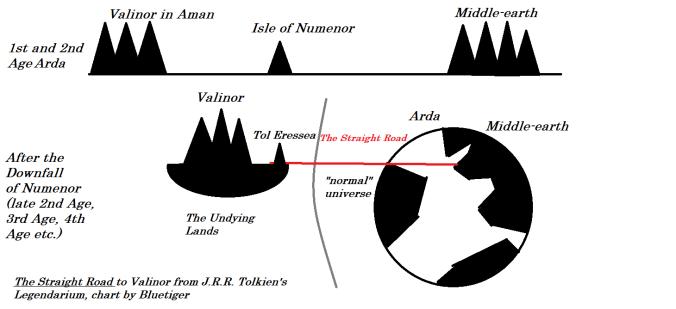
The Straight Road, chart by Bluetiger
What exactly the Straight Road was we sadly do not know, but The Akallabêth part of The Silmarillion, citing Dunedain sages, describes it as “a mighty bridge invisible that passed through the air of breath and of flight (…), and traversed Ilmen which flesh unaided cannot endure, until it came to Tol Eressëa, the Lonely Isle, and maybe even beyond, to Valinor, where the Valar still dwell and watch the unfolding of the story of the world”.

Arda and the Airs according to Numenorean tradition, chart by Bluetiger
In later times, stories and legends would be told among humans, especially those living by the coast and mariners, about lost sailors, who by some chance, fate or grace of the Valar entered upon the Straight Road and saw “the face of the world sink beneath them” (which might be a reference to traveling into outer space, just like the “Ilmen which flesh unaided cannot endure” sentence – Ilmen was the name of the region of the Firmament where the stars were located). “And so had come to the lamplit quays of Avallónë, or verily to the last beaches on the margin of Aman, and there had looked upon the White Mountain, dreadful and beautiful, before they died”. Thus ends The Akallabêth, a tragic story of Numenor’s rise and downfall.
***
The Lost Road & The Notion Club Papers:
Éadwine & Ælfwine, Edwin Lowdham & Alwin Arundel Lowdham
In Tolkien’s The Lost Road, which belongs to a version of his tales in which the events of The Silmarillion, LOTR and all other stories took place in our Earth’s distant past, it was revealed that throughout history, for some mysterious reason there would appear pairs of father and son, descended from the Numenoreans and from Elendil himself, where the father would have a name with a meaning similar to Amandil, and the son with a name referencing Elendil, Elf-friend.
In the Anglo-Saxon England there was Éadwine, a sailor who captained the ship Éarendel. Both the mariner and his vessel disappeared in the Atlantic in Anno Domini 878. Éadwine was the first man in millenia to find the Straight Road, repeating Amandil’s journey – it is implied he never actually reached Aman, as Amandil seemingly was lost at sea before the arrived there.
His son Ælfwine also felt strong sea-longing, like all descendants of Elendil, and also sailed westward from Britain, then passed Ireland and voyaged into the open ocean. His ship entered the Straight Road and Ælfwine washed on the shore of Tol Eressëa. He befriended the Elves living there, learned their language and became a student of the great loremaster Pengolodh, chronicler of the First Age. This historian told him about the earliest days of Arda, described in the Ainulindalë, and showed him his own writings on Elvish linguistics, the Quenta Silmarillion (Tale of the Silmarils), Narn i Chîn Húrin (Tale of the Children of Hurin), the Annals of Beleriand and Rumil’s the Annals of Aman.
Ælfwine translated all those extensive works into Old English, and then returned to his homeland. In this way the history of the First, Second and Third Age was not lost to mankind.
Tolkien’s abandoned novel The Notion Club Papers describes how those father-son pairs appear even to our present day. Its protagonist, the English language lecturer at Oxford, Alwin Arundel Lowdham, plays the archetypal role of Elendil, and his father Edwin Lowdham (who was lost at sea many years prior) is the present-day Amandil.
There are many versions of Tolkien’s tales, from different stages of his Legendarium’s development. We don’t know what the ultimate continuity would be – if there would be references to Arda being our Earth and LOTR and The Silmarillion being our world’s distant past. Perhaps all those references to the Red Book of Westmarch (which contained the in-universe The Hobbit by Bilbo Baggins, and Frodo’s The Downfall of the Lord of the Rings and the Return of the King) and Bilbo’s The Translations from the Elvish were supposed to be among the texts presented to Ælfwine by the Elves of the Lonely Island, and he would translate them into Old English. Then they would be preserved in some library or monastery, until found and translated by J.R.R. Tolkien. This version of events sounds likely, but we can not be sure if Tolkien, had he made all planned revisions to his works, would retain the Ælfwine plotline and make his voyage the framing story of all his legends.
***
The Straight Road as described in Tolkien’s Letters
As to the Straight Road, there exists a letter, published in The Letters of J.R.R. Tolkien, where the author goes into some detail about it. He mentions that the “immortals” (the Elves) who wished to sail west (after the Downfall of Numenor, when Valinor was removed from Arda), would have to use specially made and hallowed ships. They would set sail only after sunset and steer their vessels West, towards the place where the Undying Lands once were located.
If one were to observe such a ship form the shore, he would realise that it never became hull-down and dwindled only because of distance, and then it would vanish in the twilight. (It sounds that for an onshore watcher, the ship would appear to “sail” due West in the air). The ship followed the Straight Road to the Ancient West instead of, like a normal vessel would, following the “bent road” – the curvature of Earth’s surface. The moment the ship vanished, it left the physical world and there would be no returning. Tolkien goes on to say that the Elves and the few mortals who were allowed to enter upon the Straight Road abandoned the “History of the world” and could not play any further part in it.
***
Celebrimbor, Annatar and the Rings of Power
Following the War of Wrath, the Noldor were allowed to return to Valinor, and all other Elves, even those whose ancestors never arrived there on the Great Journey, were encouraged to also come there, as their time in Middle-earth was coming to an end and the Dominion of Men was nearing. However, some refused the call. Some of the Noldor still wanted to make Feanor’s dream of the Noldor flourishing in the vastness of Middle-earth a reality. Many of the Grey and Silvan Elves also still desired to stay.
While the major Noldorin kingdom of the Second Age was Lindon, governed by Ereinion Gil-galad, the fourth High King of the Noldor in Middle-earth, a group of Elven craftsmen from this kindred moved the land of Eregion where they founded a separate realm. Hollin (Land of Holly), as it was also called, was located west of the Misty Mountains, close to the Walls of Moria. Its capital was the city of Ost-in-Edhil, founded by Galadriel. When she and her husband Celeborn moved to Lorien, on the eastern side of the Misty Mountains, Feanor’s grandson Celebrimbor became its Lord. (In one version, Celebrimbor seized power and Galadriel had to flee).
Celebrimbor was the greatest craftsman and smith since the days of Feanor. His people worked closely with their allies and friends, the Dwarves of Durin’s Folk from the nearby Khazad-dûm. Celebrimbor and his fellow Noldorin smiths established the famed brotherhood of Gwaith-i-Mírdain, the People of the Jewel-smiths. This guild excelled in working with mithril, but their greatest creations were the Ring of Power.
The Noldor, as I have mentioned, still wanted to remain in Middle-earth, yet they also knew that the Elven-kind was fading, growing weary with the mortal lands and the Dominion of Men was nigh. They would not accept this and stand idly waiting for it to happen, or leave for the Ancient West.
It was at that time that a mysterious being arrived. He introduced himself as Annatar (which means “Lord of Gifts”), and presented himself as an envoy of the Valar. This Annatar offered his assistance in making Middle-earth as beautiful as Valinor, in turning it into another Undying Lands. Cirdan the Shipwright and High King Gil-galad were sceptical of those claims and would not let this stranger within their borders. Galadriel also mistrusted of this supposed emissary.
The craftsmen of Gwaith-i-Mírdain, under Celebrimbor, readily welcomed him. Annatar shared with them many secrets and great knowledge. The Jewel-smiths collaborated with him for centuries, and once he had their full trust, Annatar provided them with instructions as to how create the Rings of Power. There were multiple Lesser Rings of Power, which – although powerful enough to be extremely dangerous to mortals – were but trifles to the Noldor master smiths. The true power rested in the nineteen Great Rings. Sixteen, seven of which were later given to the Dwarves and nine to great human kings, sorcerers and warriors, were forged directly under Annatar’s influence. Three, the Elven Rings, were created by Celebrimbor alone.
The purpose of the Rings of Power was to slow or postpone indefinitely the fading of the Elves. As J.R.R. Tolkien explained in one of his letters:
The chief power (of all the rings alike) was the prevention or slowing of decay (i.e. ‘change’ viewed as a regrettable thing), the preservation of what is desired or loved, or its semblance — this is more or less an Elvish motive. But also they enhanced the natural powers of a possessor — thus approaching ‘magic’, a motive easily corruptible into evil, a lust for domination. [Letter 131]
And in The Silmarillion it is written that:
Now these were the Three that had last been made, and they possessed the greatest powers. Narya, Nenya, and Vilya, they were named, the Rings of Fire, and of Water, and of Air, set with ruby and adamant and sapphire; and of all the Elven-rings Sauron most desired to possess them, for those who had them in their keeping could ward off the decays of time and postpone the weariness of the world. (from The Silmarillion by J.R.R. Tolkien)
Tolkien also wrote that the Noldor who lingered in Middle-earth into the Second Age “were enamoured of Middle-earth and yet desired the unchanging beauty of the Land of the Valar. Hence the making of the Rings; for the Three Rings were precisely endowed with the power of preservation, not of birth” [Letter 144].
And elsewhere, that in LOTR:
“The Elves are not wholly good or in the right. Not so much because they had flirted with Sauron, as because with or without his influence they were ’embalmers’. (…) They wanted to have their cake and eat it: to live in the mortal historical Middle-earth because they had become fond of it (or because they there had the advantages of superior caste), and so tried to stop its change and history, stop its growth… and they were overburdened with sadness and nostalgic regret”
This is what the Noldor of the Gwaith-i-Mírdain guild desired, the purpose for which they desired all that secret knowledge Annatar was providing. Celebrimbor created the Three Rings of the Elves: Narya, the Ring of Fire set with a ruby; Nenya, the Ring of Water, made of mithril and embedded with a stone of adamant; and Vilya – the greatest of the Three Rings – Vilya, the Ring of Air, made of gold and set with a sapphire stone. Overall, the Noldor made nineteen Rings of Power.
But Annatar forged another in the land of Mordor: the One Ring able to control all the rest, to dominate the wills of those who wore the other Rings and to reveal to its Lord all deeds ever done with the power of the rest. But at that moment, as Sauron – for he was the one calling himself Annatar – pronounced the words of the One Ring’s spell (the Ring-verse: One Ring to rule them all etc.), in Eregion, far from Mount Doom in Mordor, the Jewel-smiths heard his voice in their heads and realised they were betrayed. They took off their rings and refused to wear them as long as Annatar, now revealed to be Morgoth’s servant Sauron, possessed the One Ring.
Furious that his true intentions were now known, Sauron assembled his hosts and marched across Middle-earth. Eregion was sacked and all artifacts stored in the vaults of the guildhall of the Gwaith-i-Mírdain fell into the Dark Lord’s hands. Sauron took the sixteen rings, and later gave nine to mortal men, and seven to the Dwarves (though among Durin’s Folk of Khazad-dûm there existed a tradition that King Durin III received his ring before the Sack from Celebrimbor himself).
Celebrimbor was captured and tortured into revealing the location of the sixteen, but would not tell Sauron where the Three were hidden. When Feanor’s grandson expired, Sauron took his body and had it put on a pike, and then marched before his advancing armies as a banner. Sauron was unable to conquer the final remaining Noldor holdings in Middle-earth – Lindon and Imladris (Rivendell), the hidden refugee founded by Elrond who led some survivors away from the Sack of Ost-in-Edhil. Both were besieged, but at that time the Elves still had powerful allies – the Numenoreans. Tar-Minastir, the 11th monarch of that mighty realm, sent a grand armada under Admiral Ciryatur. In those days the Numenoreans were so powerful that even Sauron and all his legions were defeated. The Dark Lord’s army was completely routed and he hardly managed to fall back to Mordor with only a tiny personal guard left.
After some time, when the Numenorean army returned home, and the Numenorean kings who followed Tar-Minastir were less friendly towards the Elves, Sauron slowly regained his strength and the Dark Years began – it was a time when orcs from Mordor roamed freely across Middle-earth, many human tribes were forced to hide in the deep woods or in the mountains, other tribes of men worshipped Sauron as god and only Lindon, Rivendell, Lorien and Khazad-dûm remained truly free. For the Elves these were the “Days of Flight”, when great many ships sailed west from Cirdan’s havens in Lindon, never to return.
When Sauron’s long-term scheme to destroy Numenor worked, he attacked the Free Peoples of Middle-earth once again. However, although the might of Numenor was now gone, there was heavy resistance in the form of the Last Alliance of Men and Elves. Thanks to the sacrifice of High King of the Noldor Gil-galad and High King of the Dunedain Elendil, Sauron was defeated, though once again not forever. Yet the One Ring was lost (few knew it was taken by Elendil’s son Isildur and later lost in the Gladden River when Isildur’s party of knights was ambushed by a remnant of Sauron’s shattered army hiding in the mountains).
The Elves thought it was safe to use the Three Rings once again, and they did. When Celebrimbor learned of Annatar-Sauron’s true intentions, he gave the Three to three powerful Elves for safekeeping, Vilya, the greatest of the Rings, he gave to Gil-galad, but the High King believed it would be safer with his Vice-regent and Herald, Elrond of Imladris. Nenya, the Ring of Water, was given to Galadriel, who used it to make Lorien the most fair place in Middle-earth. There are two accounts of what Celebrimbor did with Narya, the Ring of Fire, but in both scenarios the ring ended up with Cirdan the Shipwright. (In one, it was first given to Gil-galad together with Vilya, but the High King granted it to Cirdan, in the other Cirdan received it directly from Celebrimbor). In this way, the Rings were saved from Sauron and in the Third Age thanks to them Elven realms like Rivendell and Lorien still flourished.
When emissaries from the Valar known as the Istari (Wizards) arrived from Valinor in the Third Age, Cirdan was perhaps the only person to witness that and know whom the Wizards truly were – five of the Maiar entrusted with a special task. Although it seems the Wizards arrived separately, with Gandalf coming only after Saruman and the Blue Wizards, Círdan gave Narya, the Ring of Fire, to him, perhaps sensing that Gandalf was the wisest and most trustworthy of them all.
When he first met Gandalf, he greeted him with the following words:
“Take this ring, Master, for your labours will be heavy; but it will support you in the weariness that you have taken upon yourself. For this is the Ring of Fire, and with it you may rekindle hearts in a world that grows chill. But as for me, my heart is with the Sea, and I will dwell by the grey shores until the last ship sails. I will await you.” (from The Silmarillion by J.R.R. Tolkien)
***
Círdan the Shipwright
Cirdan was the eldest of all the Elves remaining in Middle-earth. He was once named Nowë, and the original kings of the Teleri, Elwë and Olwë, were related to him. He took part in the Great Journey, and though he had a strong desire to sail across the Great Sea and reach Valinor, he stayed behind with a group of Elves who refused to leave their lost king Elwë.
Even when the king’s own brother Olwë concluded that there is no hope of finding him, Cirdan wanted to continue the search. When he finally came to the shore of the Great Sea, he saw only the isle of Tol Eressëa sailing west and disappearing in the distance. Cirdan stood alone on the beach and, overcome with grief, cried that he would sail to Valinor alone, on the crude first ship he built.
But in that moment he had a vision from the Valar – a voice told him that his ship would not survive the journey, and only many years later his skills in shipcraft boatbuilding would enable him to make such a vessel. The Valar gave him another mission – “Abide now that time, for when it comes then will your work be of utmost worth, and it will be remembered in song for many ages after”. Cirdan answered with simple “I obey”, and then saw a ship that sailed west through the air. That was most likely a vision of Earendil’s ship Vingilótë, in the building of which he would play a part many years later.
Cirdan remained faithful to his mission for millenia beyond count. Though he desired to see the light of Valinor, he stayed on the shores of Middle-earth and would provide ships for those willing to cross. Only when the days of the Eldar would be over, he would sail west on the last white ship, and his Great Journey would be concluded at last.
At the time of LOTR, Cirdan was the oldest Elf in Middle-earth. He lived through the Years of the Sun in the First Age, the Second Age and the Third Age. 7052 solar years… but Cirdan was born (it is also possible that he was among the first Elves who awoke on the shores of Lake Cuivienen) long before the Sun and the Moon were created. The first Elves awoke in the Valian Year 4550, and Cirdan had his vision the same year the Teleri were ferried to Valinor, 4651. Thus, we know for sure Cirdan lived through at least 349 Valian Years (around 3344 solar years using the 9,582 solar years figure for a Valian Year, 50 256 years using the 144 solar years number). At the very least, Cirdan was 10 396 solar years old at the time of LOTR. If he was among the original Elves awakened in 4550, he would be either 11 363 or 71 852 solar years old.
Whatever calculation we use, he was very old. In fact, his age was so advanced that he had a beard, which was uncommon among the Elves, but was possible in their third cycle of life, among those who still remained in the mortal lands of Middle-earth. The Elven-kind was fading – some refused to accept this, created Rings of Power to prevent it… but it was not in their power to change this fate. Cirdan knew it and fulfilled his duty to stay, build new white ships and leave only on board of the Last Ship.
***
Amroth and Nimrodel
Here I would like to briefly mention two notable characters who left Middle-earth for Valinor during the Third Age. The first was King Amroth, son of Amdir of Lorien (who fell in the Dead Marshes during the War of the Last Alliance). Amroth fell in love with a maid of the Silvan Elves named Nimrodel, and she loved him back, but would not marry him unless they could leave in peace.
In Middle-earth this was now impossible (as the Balrog recently awoke in the nearby Moria). Thus, Amroth and Nimrodel agreed they would sail to Valinor from Edhellhond in Gondor, the only Elven haven in the south. But during the journey, they became separated and Amroth reached the harbour first. There he found out only one white ship was left, and the sailors were eager to embark. However, they agreed to wait till Nimrodel’s party arrived.
One night a great storm hit the coast and wind swept the ship out the haven. When Amroth, who had been sleeping onboard, realised the ship would soon enter the Straight Road, he jumped into the sea and tried to swim to the shore, but the current was too strong and he drowned. Nimrodel’s fate remains unknown, though the pair was presumably reunited in Valinor.
In this part of Gondor, called Dol Amroth in Amroth’s honour, there existed a legend concerning an Elven handmaiden accompanying Nimrodel. Her name was Mithrellas, and she supposedly got lost in the woods but a Numenorean lord, Imrazôr, found her and they fell in love. They married and had two children. The son became the first Prince of Dol Amorth, a noble house of Gondor which survived into the Fourth Age. When Mithrellas gave birth to a daughter, she ran away one night and vanished, never to be seen again. We do not know if this tale is true, but centuries later, Legolas recognised that the current Prince of Dol Amroth, Imrahil, had elven blood in his veins. (This legend reminds me of the swan-maiden stories found from real-world folklore).
***
Celebrían
Another prominent person to leave Middle-earth for Valinor in the Third Age was Celebrían, daughter of Galadriel and Celeborn, wife of Elrond and mother of Elrohir, Elladan and Arwen. In the year 2509 of the Third Age, while traveling from Rivendell to Lorien, to visit her parents, Celebrían was ambushed by orcs at the Redhorn Pass (the one Fellowship of the Ring attempted to cross but had to turn back because of snow storm). She was tortured and wounded with a poisoned weapon. Her sons Elladan and Elrohir tracked the orcs down and rescued Celebrían. She was brought to Rivendell, where Elrond healed her body, but she did not recover in mind – there was no cure for that in Middle-earth, and left for the Undying Lands one year later.
***
The Keepers of the Three Rings: Galadriel, Elrond, Gandalf
The Ring-bearers: Frodo, Bilbo and Samwise
After the One Ring was destroyed and Sauron was defeated, the Three Rings lost their power. The Elves accepted their time in Middle-earth was over, and that the time of men had came. Their keepers would return to Valinor. Tolkien wrote that “with the downfall of ‘Power’ their little efforts at preserving the past fell to bits. There was nothing more in Middle-earth for them, but weariness. So Elrond and Galadriel depart”.
Thus, in the Autumn of Third Age 3021, Elrond and Galadriel rode to the Grey Havens, where Cirdan had a ship prepared for them. They were accompanied by many Elves from Rivendell, such as Gildor, and from Lorien. Gandalf (and his horse Shadowfax) were also departing.
Bilbo and Frodo, who were Ring-bearers of the One Ring, were – by the grace of the Valar – allowed to accompany them, as they were both affected by the Ring and would not find peace and happiness in Middle-earth because of it. Frodo also suffered from the Morgul-wound the Witch-king gave him at the Weathertop. Sam Gamgee was also granted this right, as he had been a Ring-bearer too, though for a short time.
However, Sam sailed only many years later, after he had 13 children with Rose Cotton and was elected Mayor of Michel Delving in the Shire for seven terms. Sam sailed west in the year 61 of the Fourth Age, but before his departure he entrusted the Red Book (containing The Hobbit and LOTR) to his daughter Elanor.
Hobbits were human, so coming to the Undying Lands would not make them immortal – but Frodo, Bilbo and Sam would live there for a long time, in happiness they would never find in Middle-earth. Gandalf was returning home, his mission complete. Elrond would be reunited with his father Earendil, his mother Elwing and his wife Celebrian. Galadriel would meet her father Finarfin and her long-unseen siblings. Galadriel, the last leader of the Noldor rebellion remaining in Middle-earth would finally accept the days of the Elves are over and that the Elves have to let go of the past. When Frodo brought the One Ring to Lorien, Galadriel faced one final temptation – if she took it, perhaps she would achieve what the Noldor had always desired?
‘And now at last it comes. You will give me the Ring freely! In place of the Dark Lord you will set up a Queen. And I shall not be dark, but beautiful and terrible as the Morning and the Night! Fair as the Sea and the Sun and the Snow upon the Mountain! Dreadful as the Storm and the Lightning! Stronger than the foundations of the earth. All shall love me and despair!”
She lifted up her hand and from the ring that she wore there issued a great light that illuminated her alone and left all else dark. She stood before Frodo seeming now tall beyond measurement, and beautiful beyond enduring, terrible and worshipful. Then she let her hand fall, and the light faded, and suddenly she laughed again, and lo! she was shrunken: a slender elf-woman, clad in simple white, whose gentle voice was soft and sad. ‘I pass the test’, she said. ‘I will diminish, and go into the West and remain Galadriel.’ (from The Lord of the Rings by J.R.R. Tolkien)
Galadriel passed this one final test and finally could return home.
Besides Frodo, Sam and Gandalf two other members of the Fellowship would also sail West – Legolas and Gimli, who did so after Aragorn’s death. The first one felt strong sea-longing that would touch all Elves in those final days of their kind, as the Eldar were fading away. The second one accompanied him out of friendship, and reached Valinor as first and perhaps the only of the Dwarves. Perhaps he met Aulë, the Smith of the Valar, who created the Dwarven kind.
With the departure of Frodo’s White Ship on September 29, 3021, the Third Age came to an end. The Lord of the Rings describes this event as follows:
Then Frodo kissed Merry and Pippin, and last of all Sam, and went aboard; and the sails were drawn up, and the wind blew, and slowly the ship slipped away down the long grey firth; and the light of the glass of Galadriel that Frodo bore glimmered and was lost. And the ship went out into the High Sea and passed on into the West, until at last on a night of rain Frodo smelled a sweet fragrance on the air and heard the sound of singing that came over the water. (from The Lord of the Rings by J.R.R. Tolkien)
At some point in the Fourth Age, the Last Ship sailed West from the Grey Havens. On its board was Galadriel’s husband Celeborn, and Cirdan the Shipwright himself, about to finish his Great Journey at last. With their passing the last remaining witnesses of the Elder Days left Middle-earth forever.
The Silmarillion ends with another description of the passage of the White Ship Bilbo, Frodo, Galadriel, Elrond and Gandalf sailed on. I think it is is a very fitting conclusion to this essay.
White was that ship and long was it a-building, and long it awaited the end of which Círdan had spoken. But when all these things were done, and the Heir of Isildur had taken up the lordship of Men and the dominion of the West had passed to him, then it was made plain that the power of the Three Rings also was ended, and to the Firstborn the world grew old and grey. In that time the last of the Noldor set sail from the Havens and left Middle-earth for ever. And latest of all the Keepers of the Three Rings rode to the Sea, and Master Elrond too there the ship that Círdan had made ready. In the twilight of autumn it sailed out of Mithlond, until the seas of the Bent World fell away beneath it, and the winds of the round sky troubled it no more, and borne upon the high airs above the mists of the world it passed into the Ancient West, and an end was come for the Eldar of story and of song. (from The Silmarillion by J.R.R. Tolkien)
I hope now you understand a little better what it means to “sail west” in a fantasy story. Thank you for reading! Namárië!
Bluetiger
***
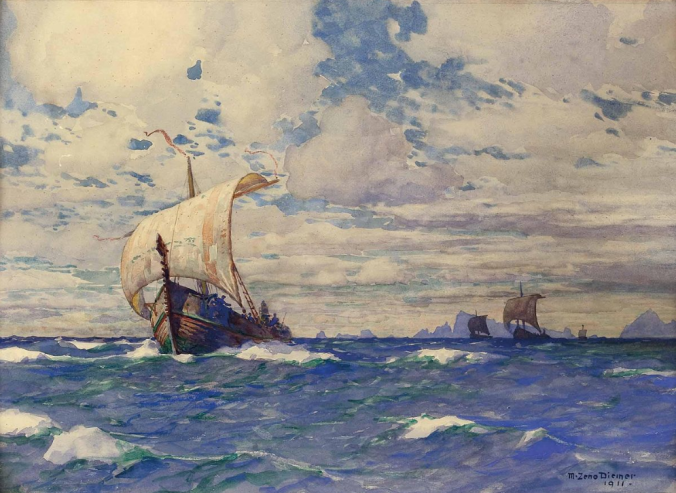
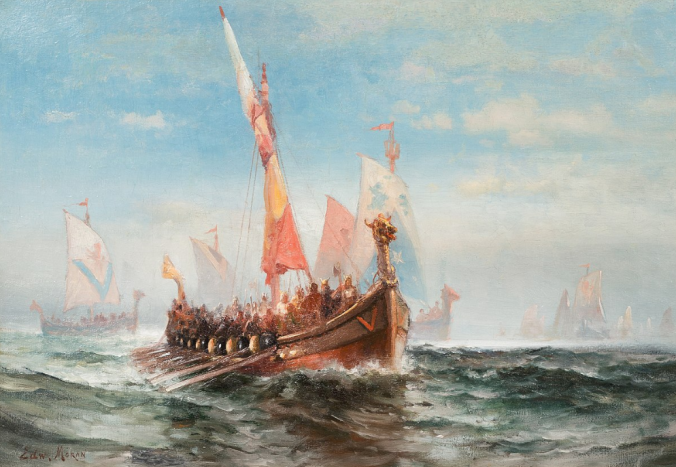

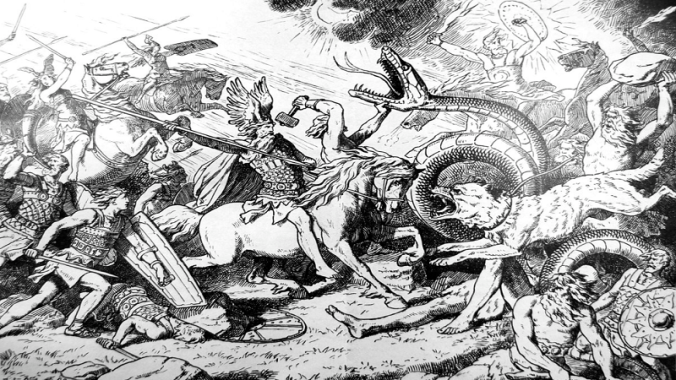
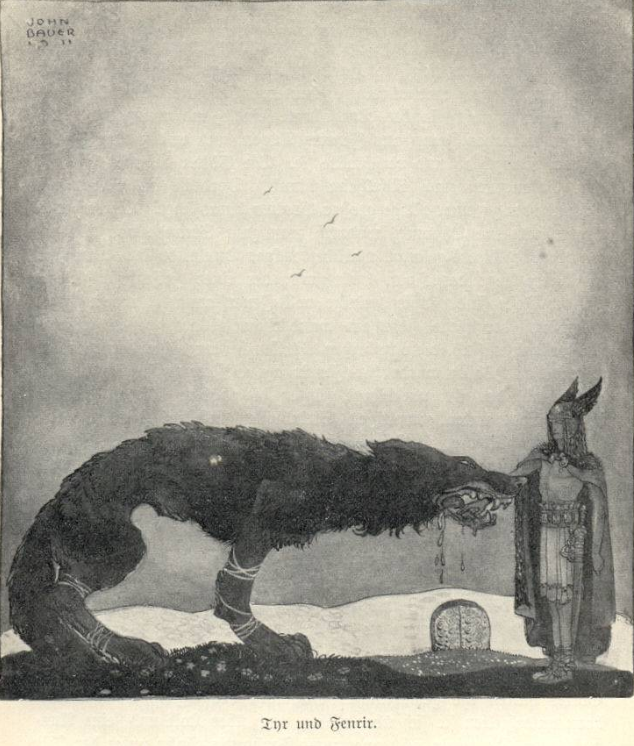
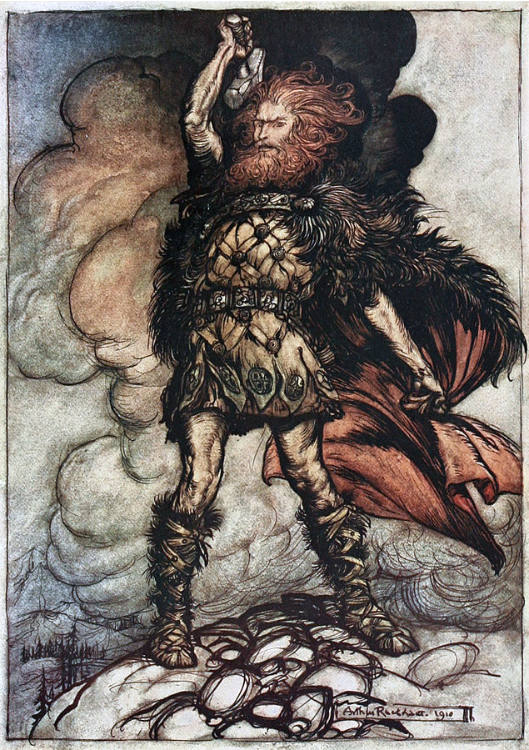
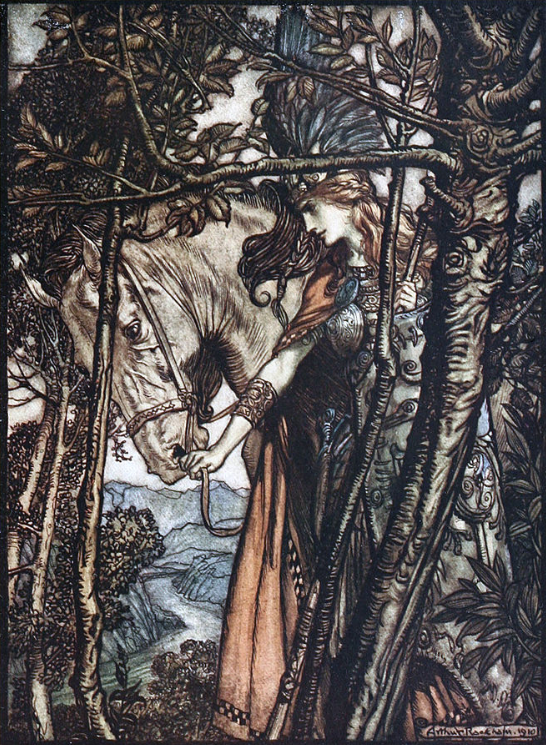

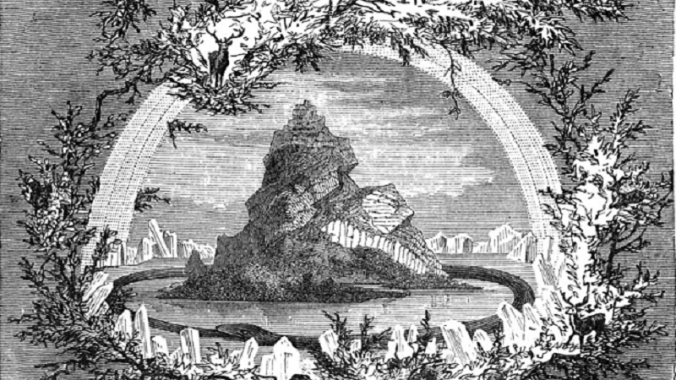
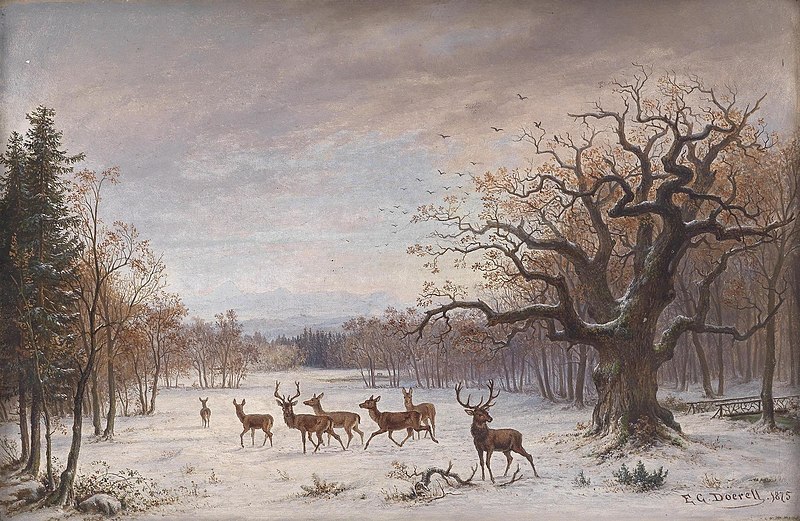


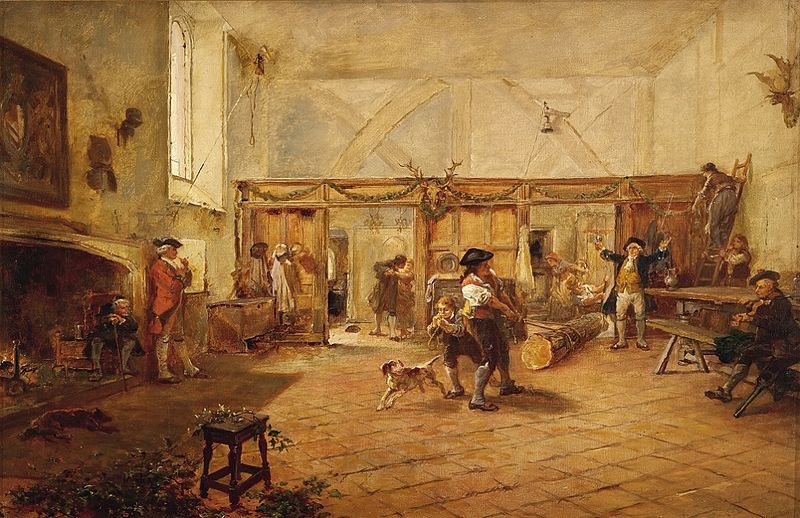


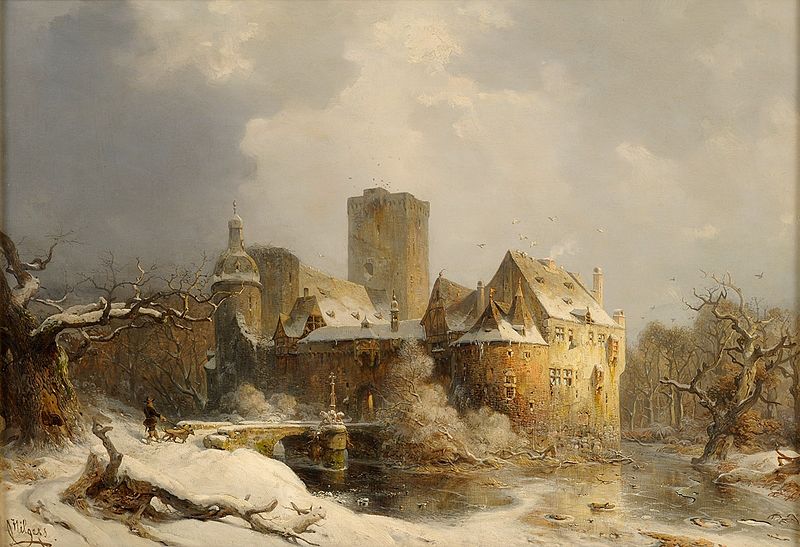
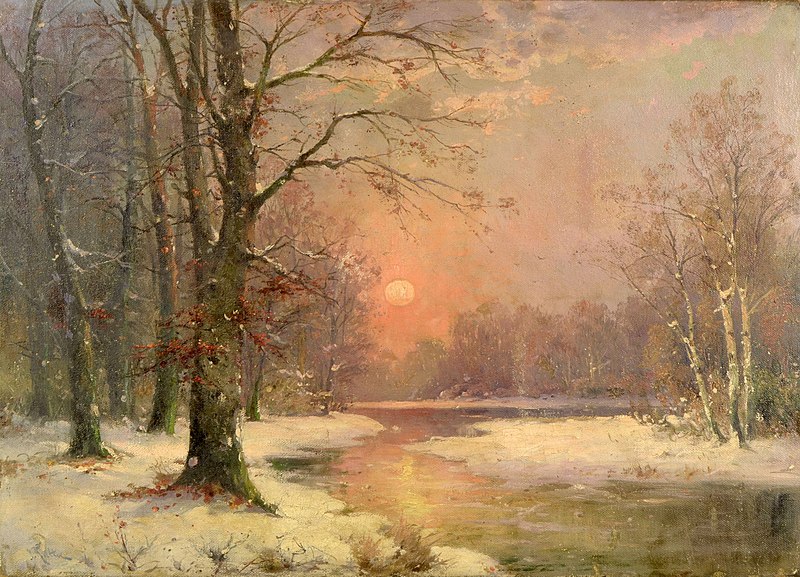
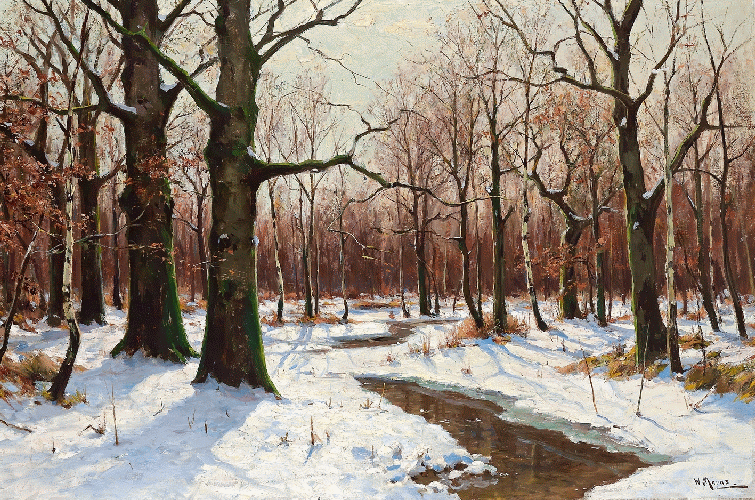
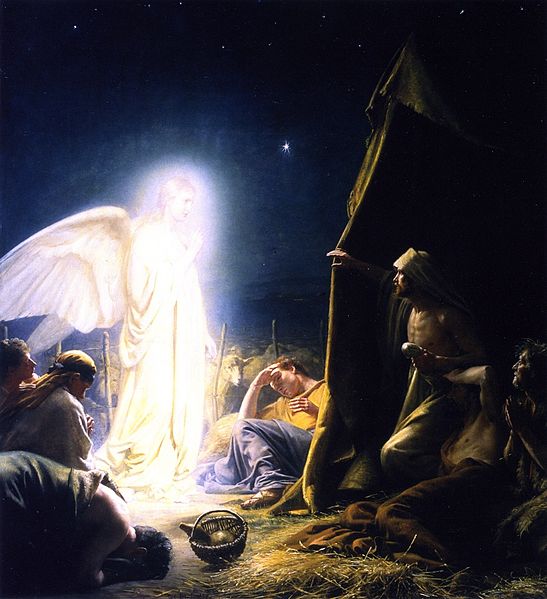

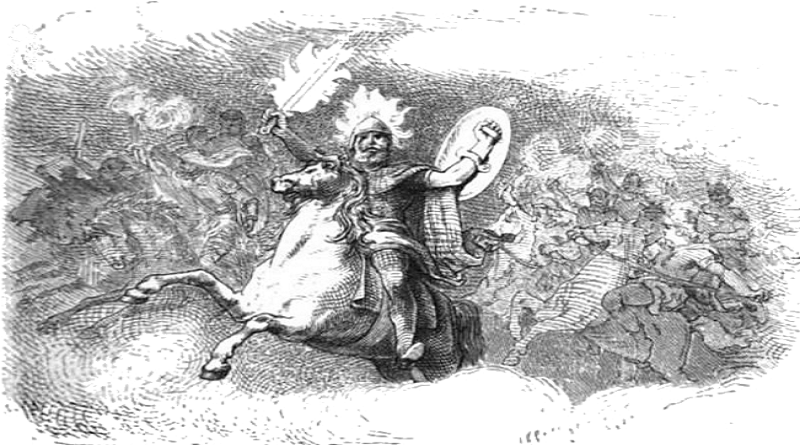

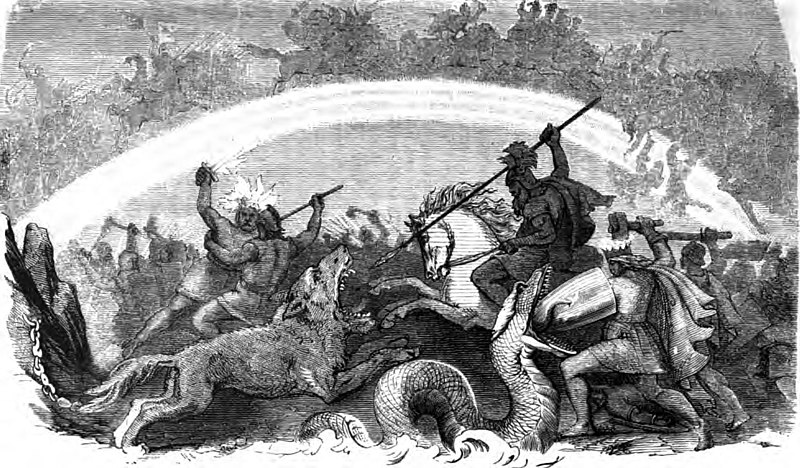
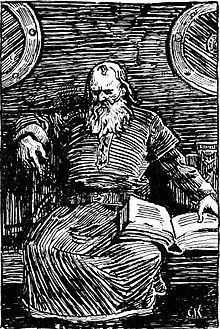



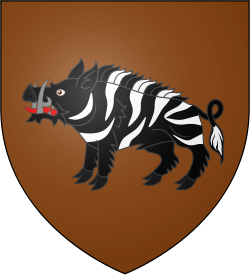
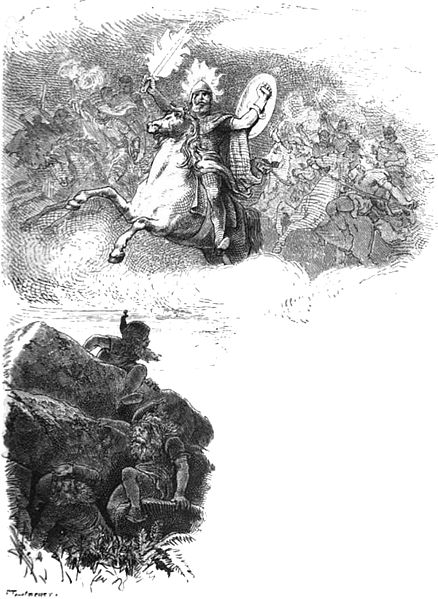





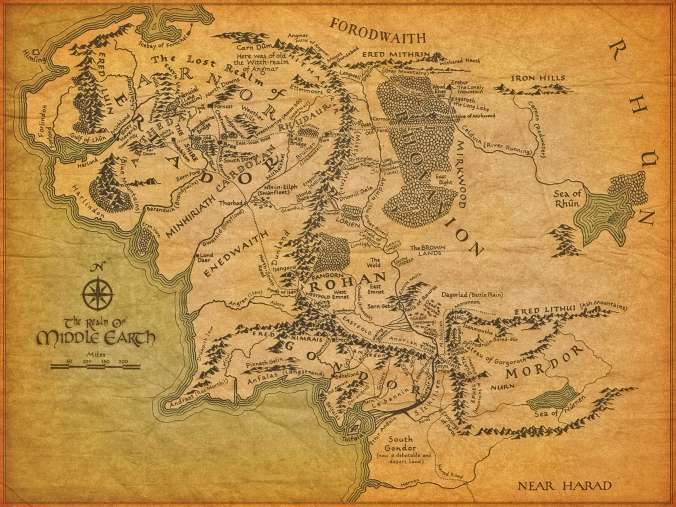


You must be logged in to post a comment.